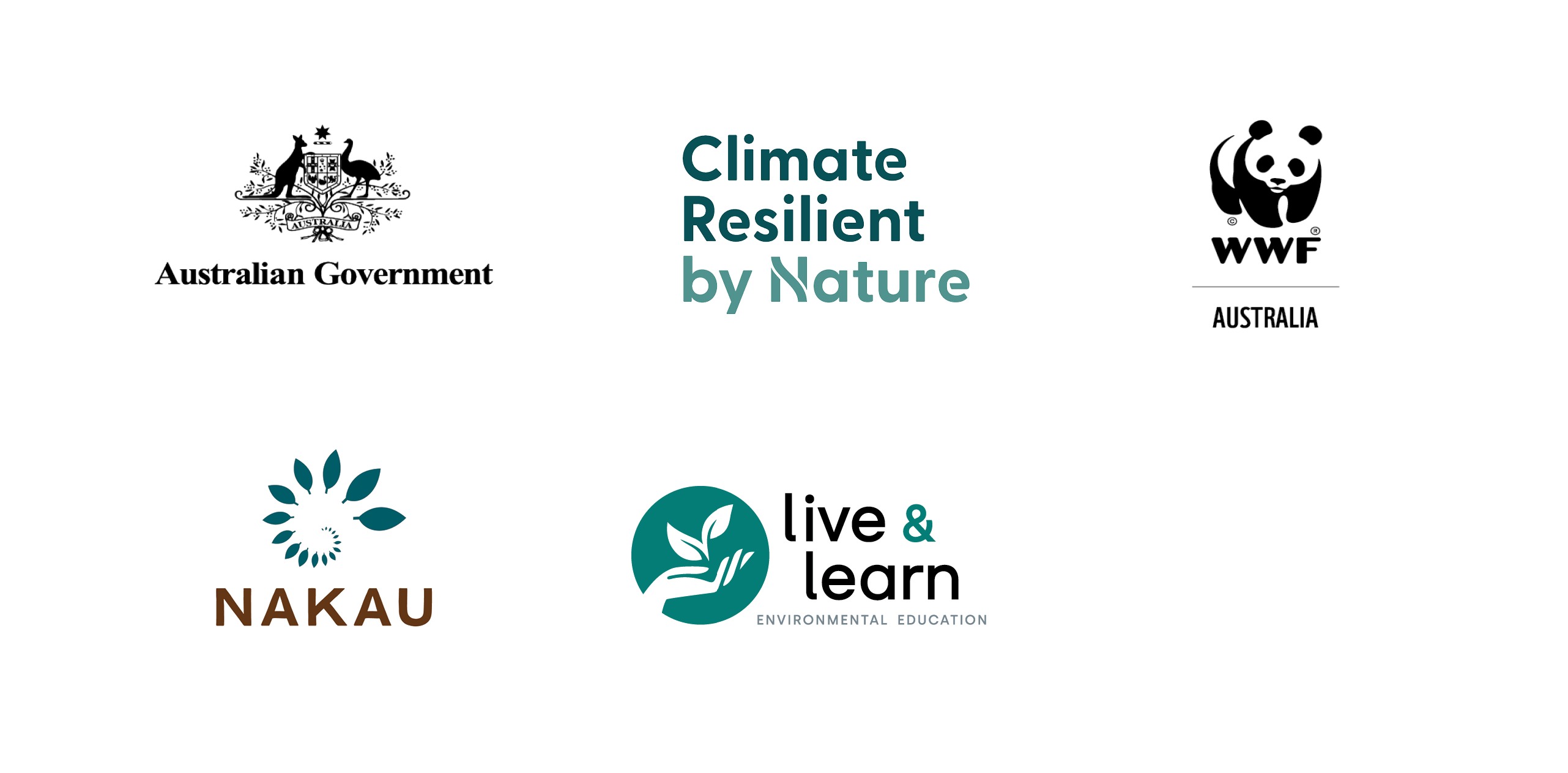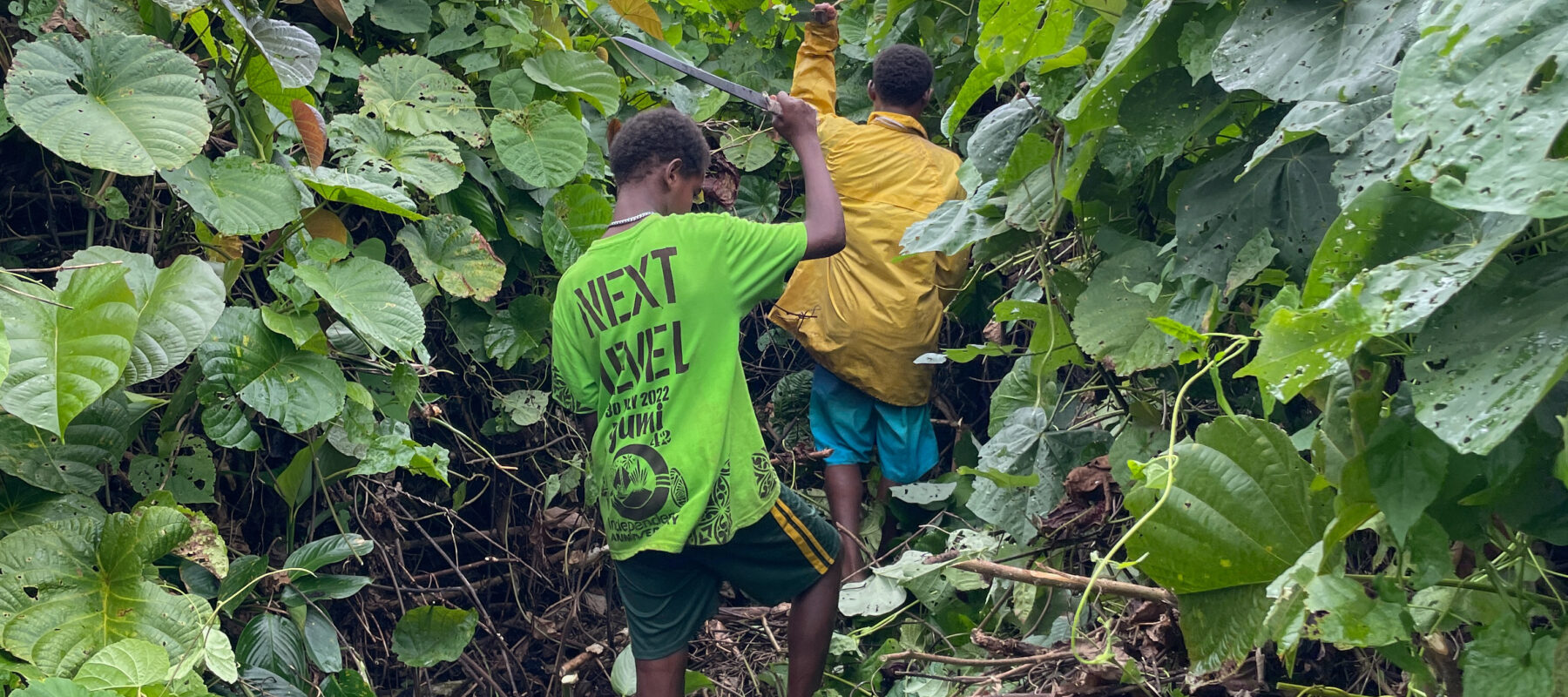‘Big lif’ spells big problems for the forests of Vanuatu. Across the small Pacific nation, this invasive species has taken over disturbed forests, smothering trees and destroying healthy habitats for birds, insects and animals.
Its botanical name is Merremia peltata, commonly known as ‘bif lif’ in the Pacific or just ‘merremia’ in English — a woody, tropical vine that forms dense thickets in disturbed forests across the region. Identified by large leaves, where merremia is dominant, little else can grow.
“In Vanuatu, we see merremia in almost any forests degraded by historical commercial logging, and evidence shows it kills large forest trees as well as the undergrowth,” says Nakau’s Alex McClean.
“Because it is such a significant threat to forests, and already impacts communities we work with, we are exploring whether managing merremia to allow healthy forest to grow can generate carbon income to support customary landowners who are faced with this problem.”
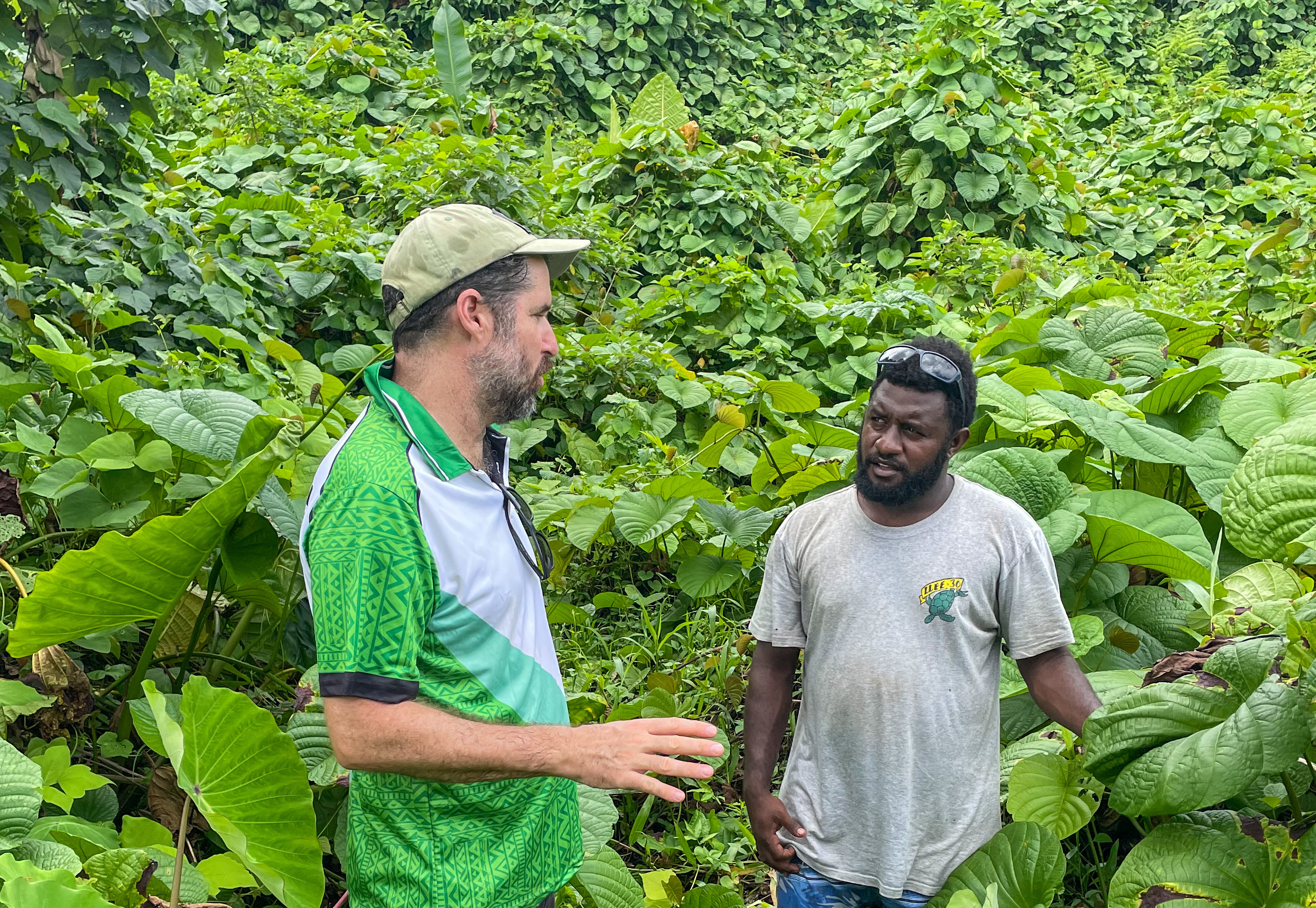
Nakau is working with Live & Learn Vanuatu and the community-owned Serthiac business who manage the Loru Conservation Area to better understand how managing merremia could create opportunities for carbon finance-supported conservation and restoration work by customary landowners.
Loru has a long history of protecting and restoring its forest on north-east Santo, with the Loru Forest Project one of the first projects that used the Nakau Methodology to establish a carbon project. But the Serthiac Rangers and entire community who manage the forest, also have years of experience battling merremia to keep their forest intact, and clear space for forest restoration through their ago-forestry plots.
Kaltabang Fred was the Head Ranger for Loru for six years. He says big lif is very powerful and that once it grows on a tree it will destroy it.
“Inside Loru Conservation Area, there are some trees that could die from big lif so we [Rangers] have a program to cut down the big lif to save the trees,” he explains.
The zone A forest (healthy intact forest) in the Loru Conservation Area that comprises Serthiac’s carbon project is relatively free of merremia thanks to the hard work Serthiac Rangers and the community has put into managing the weed. But adjacent to the intact forest, merremia is thick and threatening.
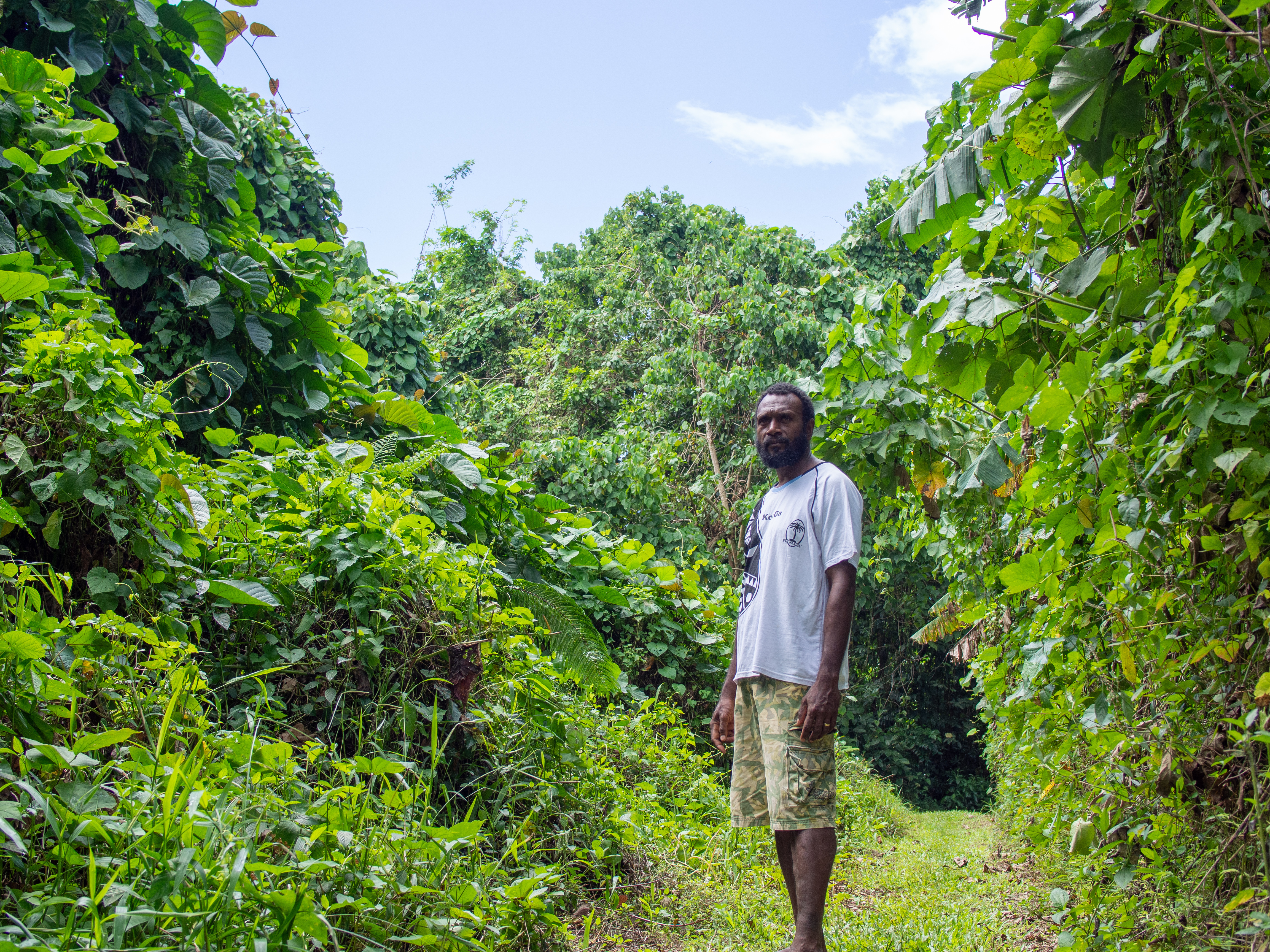
Kaltabang says their goal is to destroy merremia “and make more agro-forestry plots to grow trees and extend the dakbus [big forest].”
“When I see merremia … I feel that we have to destroy it,” he says. “But the main problem is we must have funding to destroy this big lif. If we don’t have money, we won’t be able to destroy it.
“It looks like a big blanket, smothering the forest. Once big lif grows on trees there will be no canopy. But once we destroy the big lif there will be trees and we will have canopy, and the big lif will not grow back again.”
Opportunities for managing merremia
A new feasibility study by Nakau — supported Climate Resilient by Nature — has found there is potential for a payment for ecosystem services (PES) or stewardship program that supports the clearing of merremia thickets, forest restoration and the manual removal of merremia climbers from remnant forest. The study also concludes there is good potential for registering activities in Vanuatu that generate carbon revenue through management of merremia.
The study outlines different approaches to managing the invasive species and suggests Loru may be an important pilot site to explore this opportunity.
"When considered over a theoretical 200-hectare site, the management of merremia climbers in remnant forest yields marginally more net carbon benefits (per hectare per year on a 30-year average), than clearing merremia thickets for reforestation,” says Alex McClean who is leading the project for Nakau.
“Furthermore, climber management clearly is the most cost-effective activity, requiring less labour, a smaller start-up investment and generating greater returns over a longer period for community benefit sharing.”



Further study findings
The study assumed a baseline scenario of continuation of current land-use, without climber management or reforestation. However future projects should also consider the inclusion of the conversion to agriculture as an additional baseline scenario, where applicable, to increase carbon benefits.
A preliminary consideration of additionality suggests there are no barriers to prevent the baseline scenario, while the high labour cost involved in removing merremia creates a significant economic barrier to the proposed set of project activities, without carbon finance.
Both reforestation and climber management activities incur the highest costs in the initial 10–17 years, when clearing, planting and climber management activities are the most time consuming, but credits sales are still low. Therefore, start-up investment is required to support landowners to establish a merremia management carbon project.
The study found that working on a 200-hectare site, like the one at Loru, was not profitable from a project development perspective, and there could be changes made to ensure a more viable project including:
- Increasing the project area to approximately 500–800 hectares over 30 years.
- Increasing the proportion of the project area that implements climber management (or focusing on only climber management).
- Adding avoided deforestation into the baseline scenario where appropriate.
Despite these challenges of size and profitability, supporting a merremia management project in Loru would contribute to pilot research of this approach as a nature-based solution for communities battling merremia and forest degradation. Importantly, it would also enable more Rangers to be employed with Serthiac.
What’s next?
The study and analysis for managing merremia in the Loru Conservation Area shows that all three approaches (reforestation, climber management and combined) are profitable for the Serthiac Family Business over 30 years.
In September 2023, Nakau, Live & Learn Vanuatu and Serthiac spent two weeks walking transects of the Loru Conservation Area and conducting surveys to better understand how merremia is impacting the forests and where it crosses into their land boundaries.
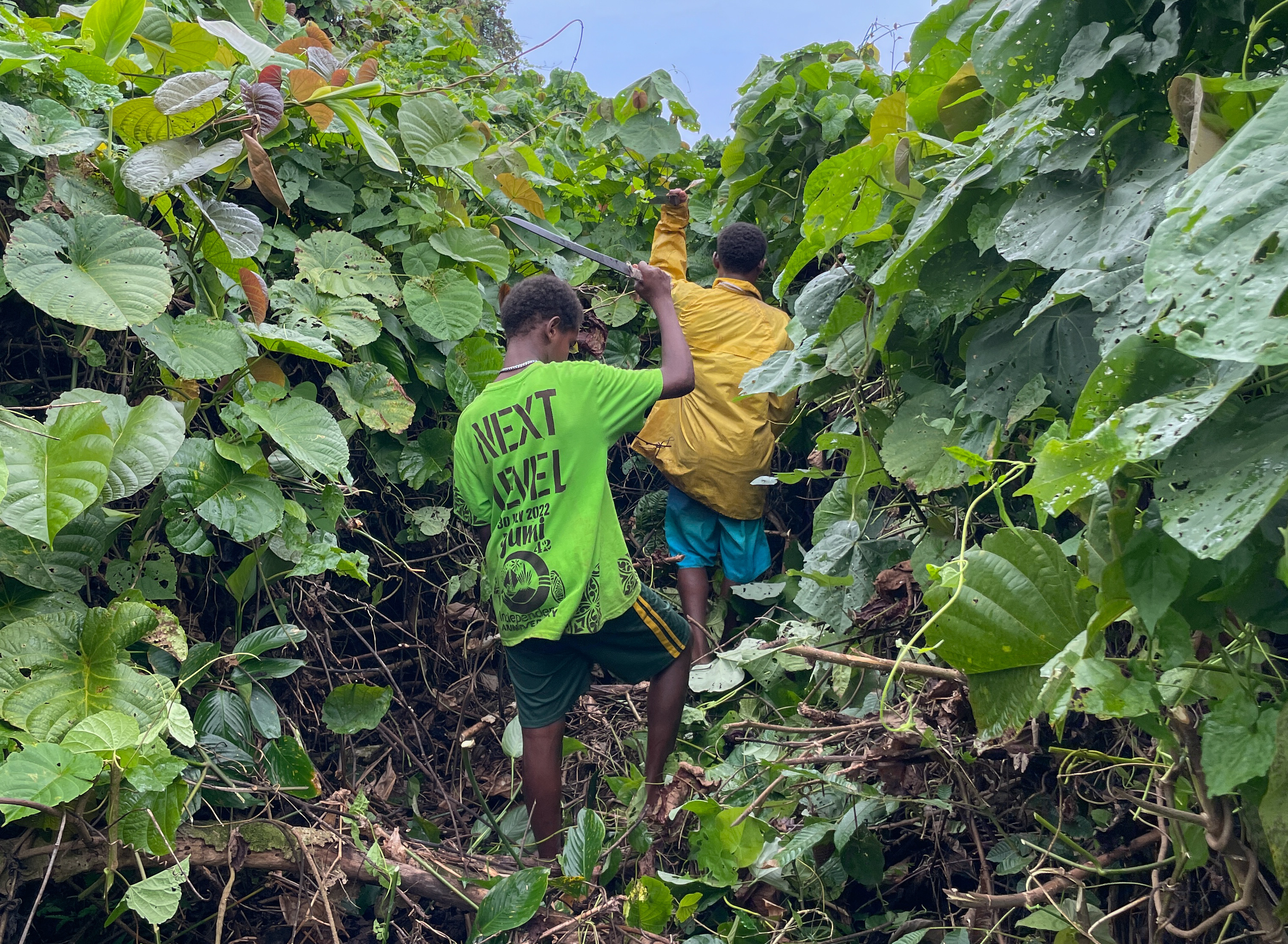
“Early results show merremia is present in much of the forest at Loru, however in areas where it is dominant the forest condition is poor and at times declining, while flora and fauna diversity are also very low,” says Alex McClean.
He adds that “areas where merremia has been removed show a noticeable increase in forest condition and species diversity. This supports our proposal that a carbon benefit can be generated by managing merremia as a means of regenerating forests.”
Read more about this work in Merremiacontrol in Vanuatu: A feasibility study
The feasibility study and fieldwork is supported by Climate Resilient by Nature through the Australian Department of Foreign Affairs and Trade and WWF-Australia in partnership with Live & Learn International.
